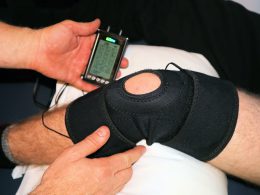Deciphering Head Injuries
Head injuries Demystified can range from mild to severe, but understanding how to identify and treat them is paramount. In this article, we embark on a journey to unravel the complexities of head injuries. With expert insights and practical knowledge, you’ll become adept at recognizing head injuries and discover the best approaches for treatment.
The Significance of Recognizing Head Injuries
Before we delve into the specifics, let’s grasp why identifying head injuries is crucial:
- Early Intervention: Timely identification allows for swift medical attention, preventing potential complications.
- Varied Severity: Head injuries can range from mild concussions to severe trauma, making accurate recognition essential.
- Improved Outcomes: Appropriate treatment significantly enhances the chances of a successful recovery.
Identifying Head Injuries
Let’s explore the key aspects of identifying head injuries:
Signs and Symptoms
Recognizing the signs and symptoms of a head injury is the first step in proper identification. Common indicators include:
- Loss of consciousness (even briefly)
- Confusion or disorientation
- Persistent headache
- Nausea and vomiting
- Dizziness or balance problems
- Memory loss or amnesia
- Difficulty speaking or slurred speech
- Unequal pupil size
- Seizures or convulsions
- Clear fluid or blood draining from the ears or nose

Photo by Sora Shimazaki: https://www.pexels.com/photo/black-woman-having-head-ache-5938367/
Types of Head Injuries
Understanding the different types of head injuries is vital. These include:
- Concussion: A mild traumatic brain injury often caused by a blow to the head, resulting in temporary loss of brain function.
- Contusion: A bruise on the brain’s surface due to a direct impact.
- Skull Fracture: A break in the skull bone, which can be linear or depressed.
- Intracranial Hemorrhage: Bleeding within the brain, categorized as subdural, epidural, or intracerebral.
Treatment Approaches for Head Injuries
Now, let’s delve into the treatment of head injuries:
Immediate Medical Attention
Any head injury, especially severe ones, requires immediate medical attention. Call 911 or seek emergency care if you suspect a head injury.
Rest and Observation
For mild head injuries like concussions, rest and observation are often sufficient. Ensure the individual rests both physically and mentally, avoiding strenuous activities and mental stress.
Surgery
In cases of severe head injuries, such as skull fractures or intracranial hemorrhages, surgery may be necessary to repair the damage or relieve pressure on the brain.
Expert Insights: Head Injury Treatment
We’ve consulted with Dr. Lisa Martinez, a neurologist with extensive experience in head injury management:
Dr. Martinez’s Pro Tip: “Head injuries are complex and can manifest differently in each case. Early identification, even for seemingly mild injuries, is critical. Consult a healthcare professional for proper evaluation and guidance on treatment.”
Conclusion: Empowered to Address Head Injuries
Understanding how to identify and treat head injuries Demystified is a valuable skill that can make a significant difference in outcomes. Whether it’s recognizing signs and symptoms or seeking immediate medical attention, being informed empowers you to respond effectively to head injuries.
Stay vigilant, act promptly, and remember that when it comes to head injuries, every moment counts in ensuring the best possible outcome.











